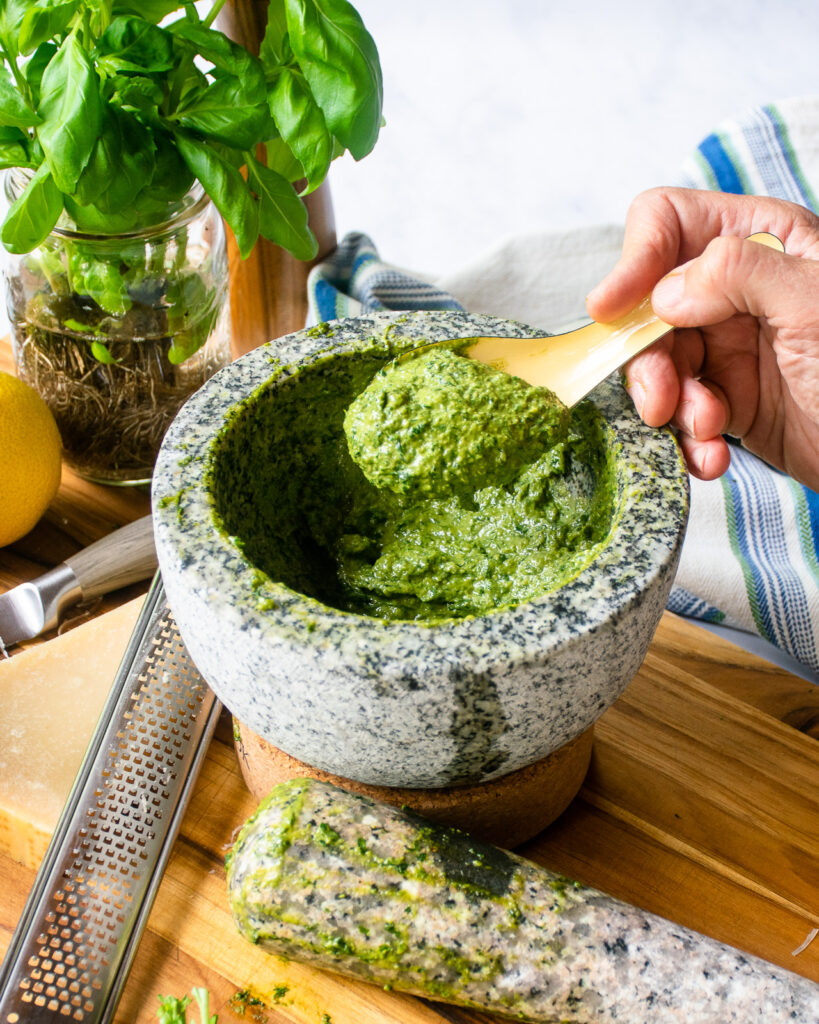
What is Pesto?
A pesto is basically a simple sauce made of blended flavorful greens, cheese, nuts and olive oil. Basil pesto is the most commonly made and most often served as a sauce for pasta. In fact, it’s one of the easiest pasta sauces to make and simply tossing some pesto with warm spaghetti, a little pasta water and perhaps another glug of olive oil can be a very satisfying meal. The word “pesto” is derived from the Italian word for “pound” or “crush” and the sauce was traditionally made with a mortar and pestle. Although many people prefer to make pesto in a food processor for the sake of prep time, I still think using a mortar and pestle is the best way to go, making a smooth, delicious sauce with no bitter bite.
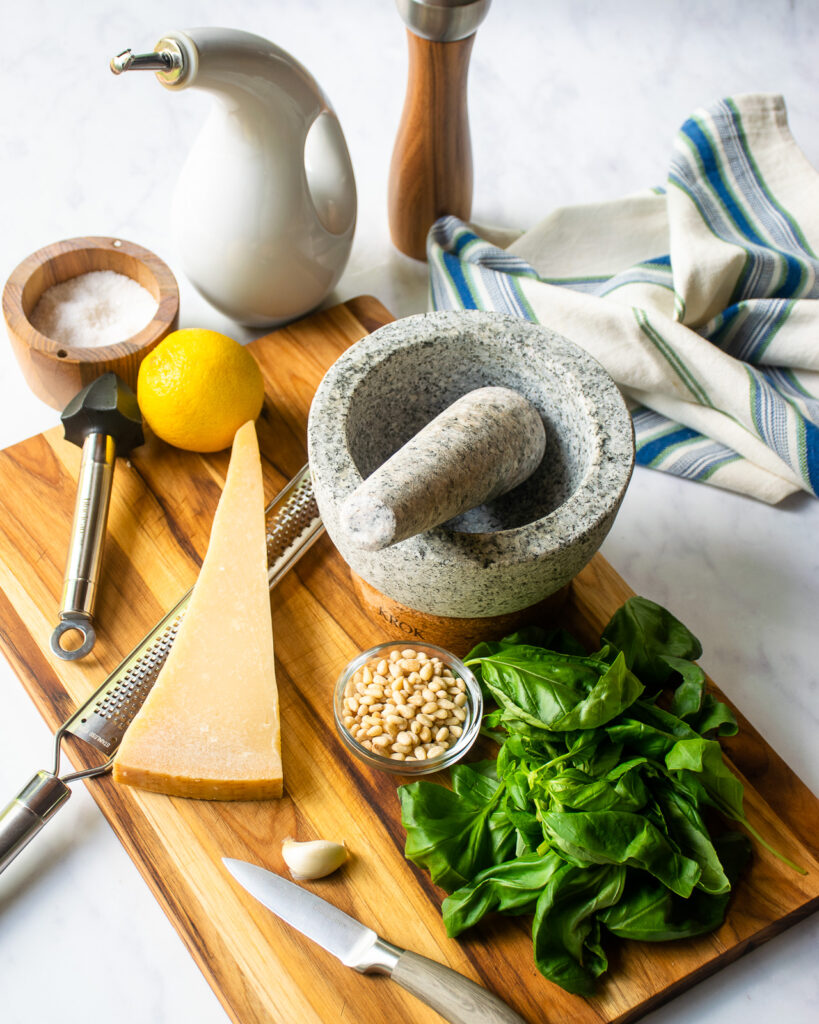
How to Make Pesto
The basic ingredients for basil pesto are fresh basil (and a lot of it!), pinenuts, garlic, Parmesan cheese, olive oil and salt. Lemon is an extra ingredient that does brighten it up a little, but it is optional. Start by pounding the garlic clove in the mortar with just a pinch of salt. You’ll see that the garlic can be crushed into a smooth paste. You won’t get this same result in a food processor, which will instead just chop the garlic into tiny pieces. Once the garlic is smooth, add the pinenuts and crush them into a paste with the pestle. Then start adding the basil, a handful at a time, and pound to break down the leaves. It takes a little time, but pounding the basil this way lets the oils release naturally and the flavor is smoother as a result. Once all the basil is pounded, add the cheese and the oil, continuing to pound. It will emulsify into a beautiful pesto. Seasoning with salt, pepper and perhaps lemon juice is the only thing you have left to do.
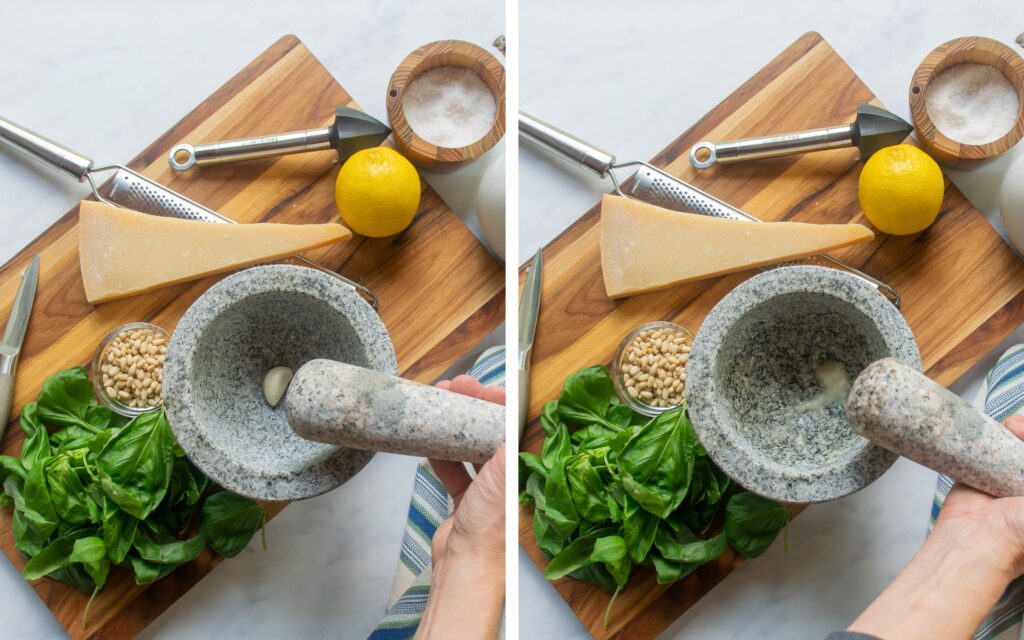
Pesto Variations
If basil is not the flavor you are looking for, there are endless varieties of pesto that you can make. You can read about some options here in this cooking school article, or check out my sun-dried tomato pesto recipe as an example of what you can do to mix things up a little.
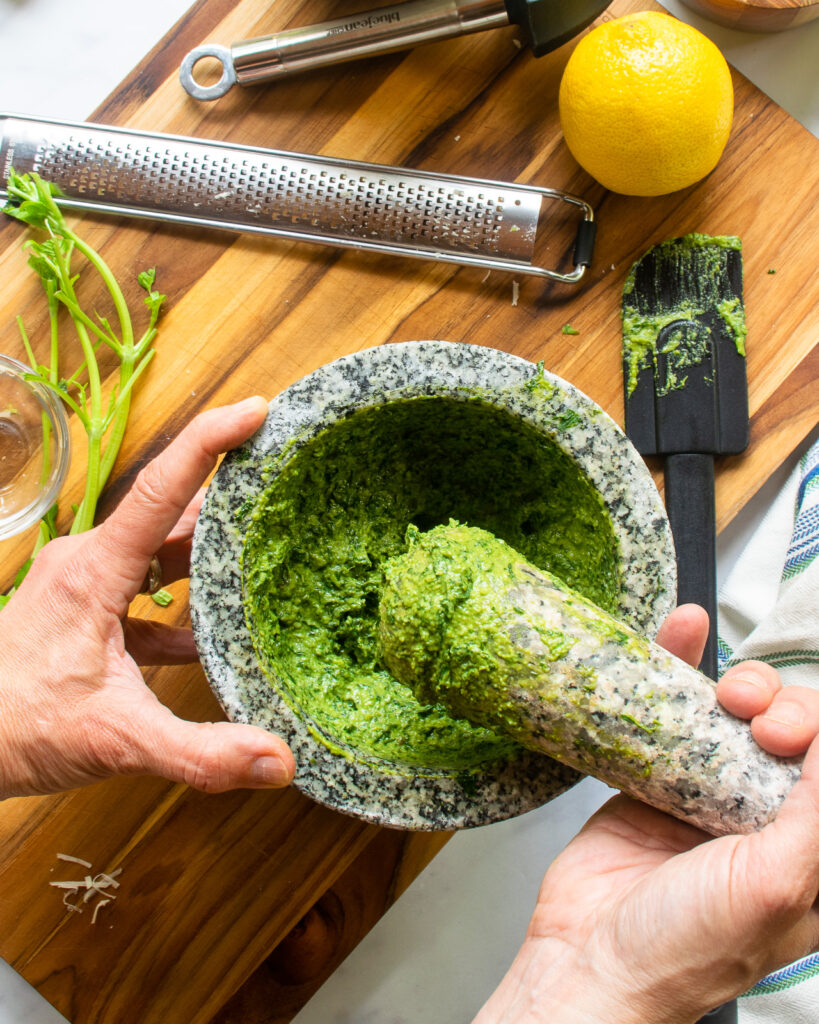
How to Use Pesto
While basil pesto is most traditionally used as a sauce for pasta, it really can go on so many different foods, from sandwiches, to pizza, to grilled fish or chicken or even to top a baked potato or an omelet. One of the reasons I always try to make a thicker pesto is because I might want to stir it into mayonnaise or spread it on ciabatta for a sandwich and I need it spreadable. I thin the pesto with a little more olive oil if I’m going to use it for pasta or to toss with vegetables.
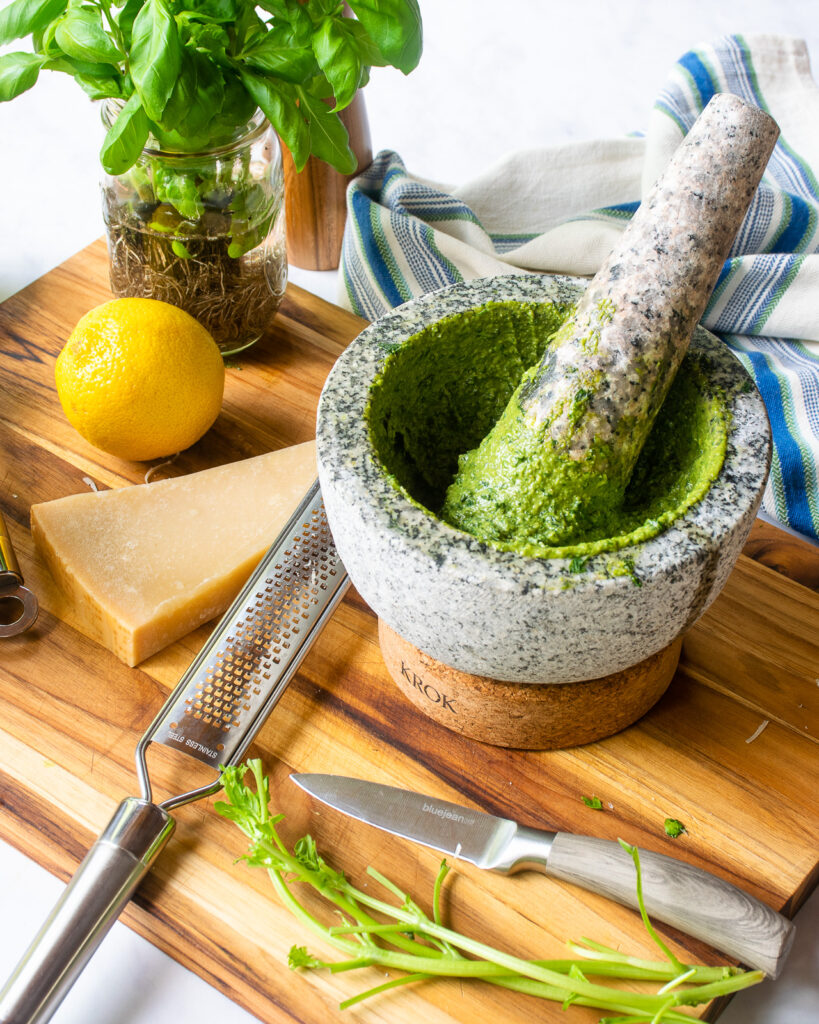
How to Store Pesto
Sadly the bright green color of pesto will fade over time. This is inevitable, but it will still taste great. You can store pesto in a container in the refrigerator for up to 5 days, with a piece of plastic wrap pressed right down on the pesto to help lesson the color fading. For longer storage, fill an ice cube tray with pesto and freeze the cubes. Then, remove the cubes and store in an air-tight bag or container. Then, you’ll have a pasta sauce at your fingertips for those quick weeknight meals.
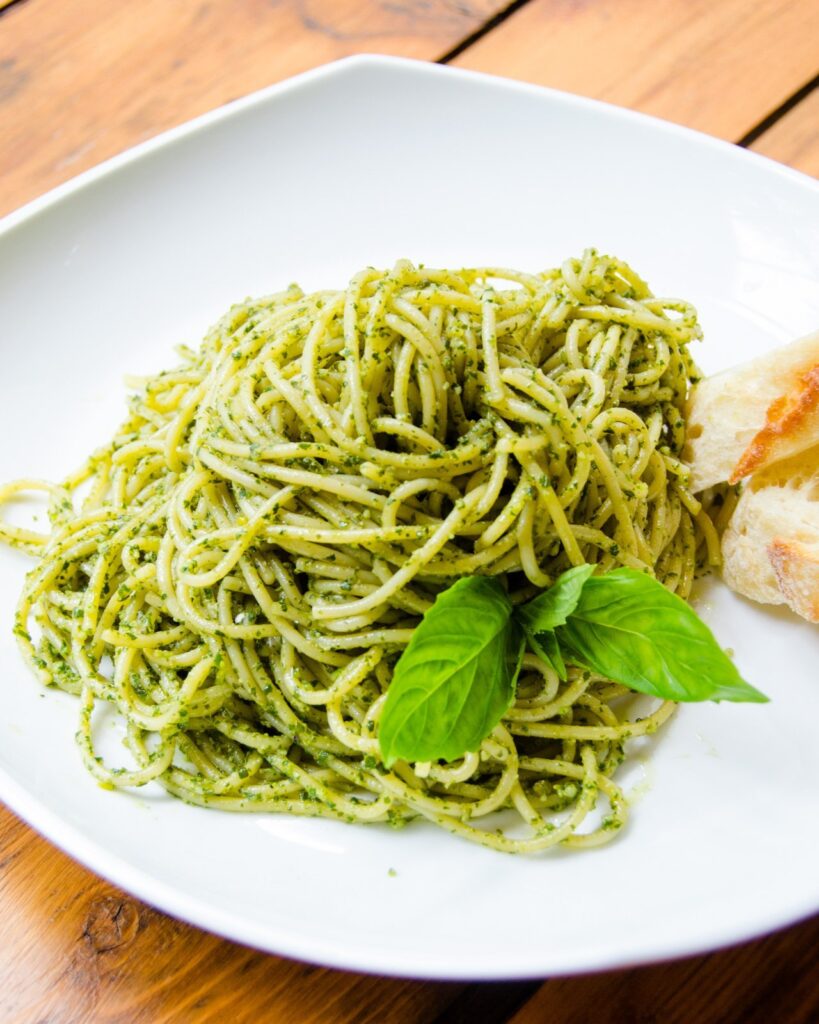
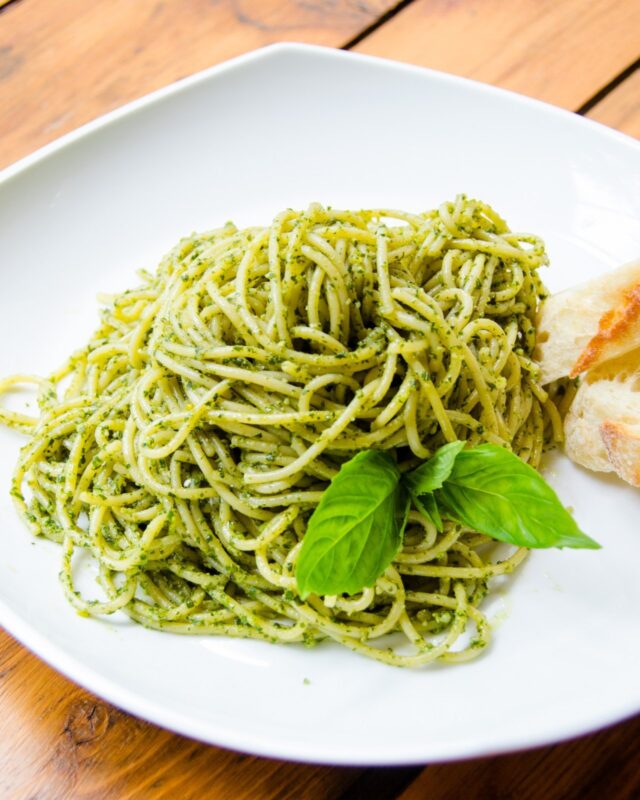
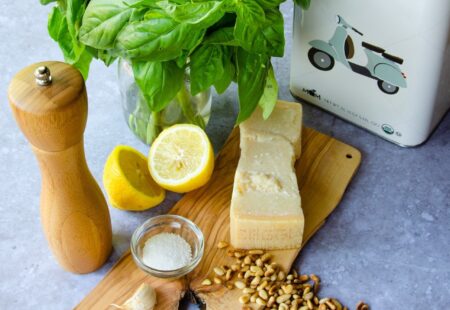
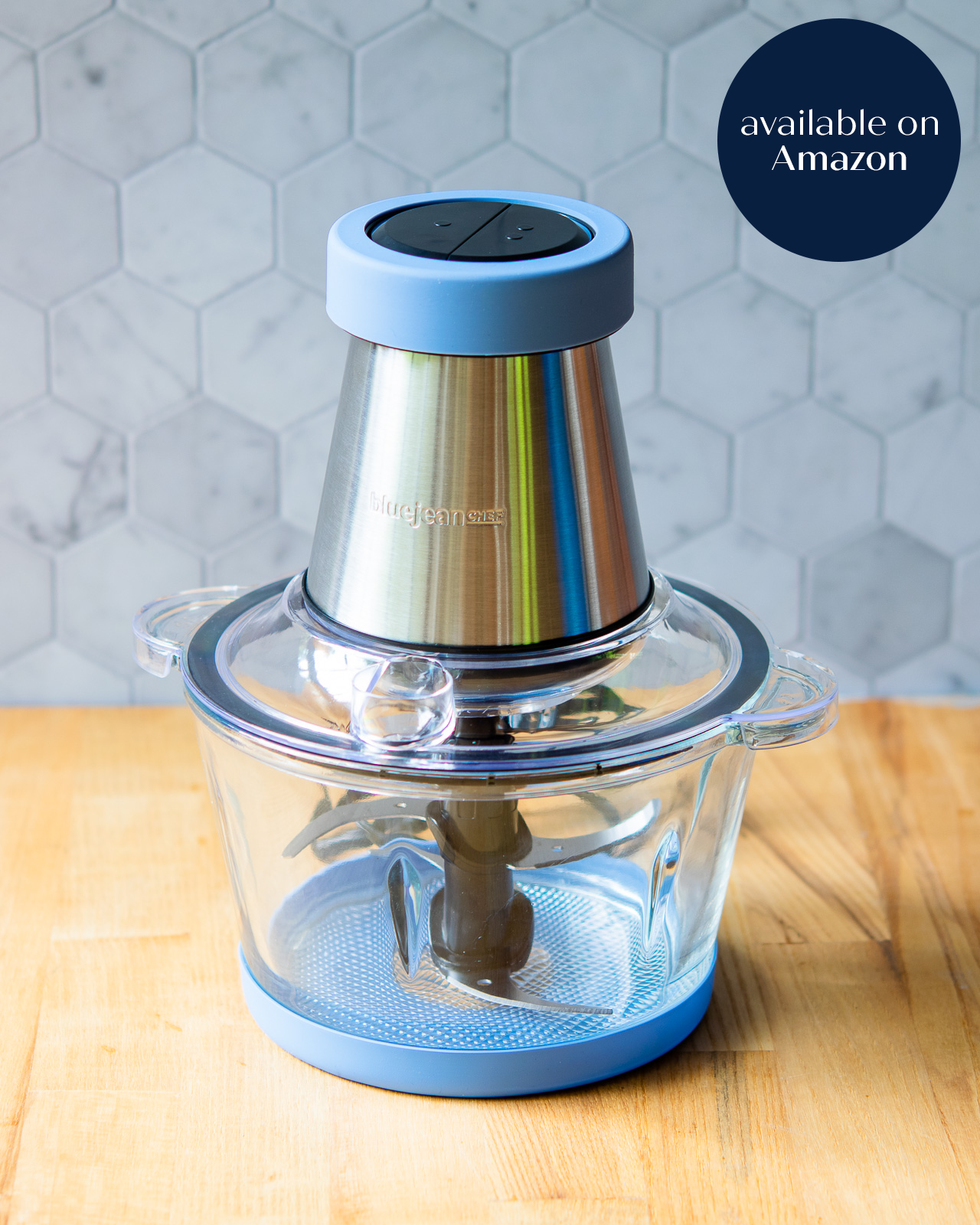
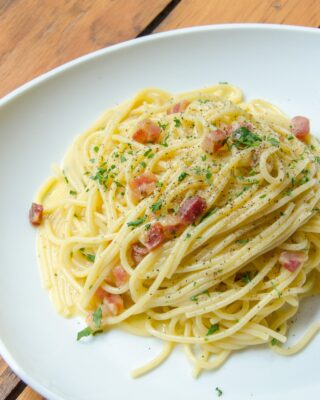
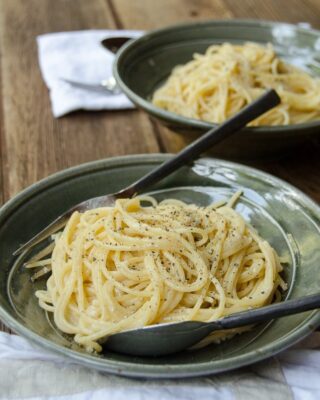
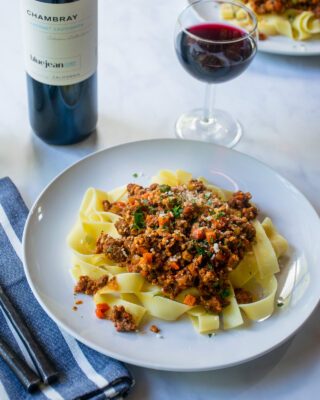
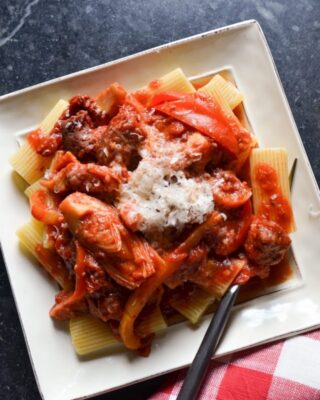
Looking forward to making this after I get the nuts…. Lots of basil waiting!!!😃👍
I made this thinking I would hate it! I do not like basil! It is awesome! I will continue to make it! Thank you Meredith!
Can you use almonds instead of pine nuts?
You can use different nuts for pesto. It will alter the taste, but you can try different variations on traditional pesto.
Your pesto recipe is pretty standard, not a bad thing. I’ve been using this recipe for years. The last time I made it, a week ago, it was bitter tasting:(((( Researching this I leaned that if you over process the basil and olive oil in a food processor, this is the reason.
Next time I’m going to stir in the olive oil to see if it helps. Don’t want bitter pesto:((((
What do you have to say?
Thank you.
P.S. I love Loulou & Hazel:)))))
Over processing in a food processor can make the pesto bitter. Make sure you add each ingredient one at a time and process the garlic, cheese, and pine nuts before you add the basil. Only process the basil for 2 minutes. If the pesto does become bitter, you can add additional parmesan cheese or a little sugar to balance the taste.
Love making BJC Pesto. The recipe is so versatile, fresh and delish. We make a thick version for wraps with fresh veggies for hot sumner eats. Appreciate her knowledge and encouragement to experiment with different nuts ( almonds are my fav) and thickness for so many different uses.